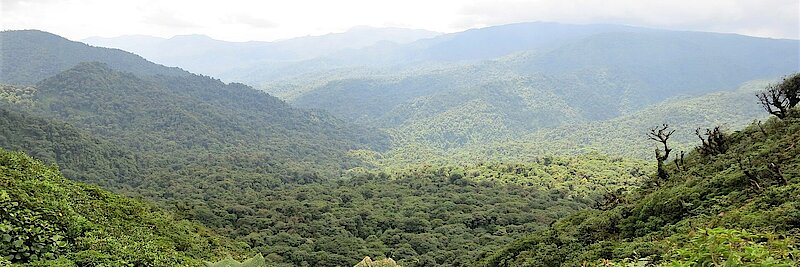Costa Rica
Green Climate Bridge in Costa Rica

Trees planted
110,635
Climate protection factor
(in kg CO2 / tree / 20 years)
836
Status
active
Ziel
2025
Green Climate Bridge in Costa Rica

Protecting lowland rainforest in Costa Rica
In the south of Costa Rica there are still large lowland rainforests, home to a unique biodiversity. But the forest is threatened by grazing and plantation farming, poaching and logging. Naturefund aims to acquire rainforest areas in order to protect and reforest this unique ecosystem and wants to create a green climate bridge between two globally important national parks.
Green climate bridge in Costa Rica
In the south of Costa Rica, on the Osa Peninsula, lies the Corcovado National Park. It protects one of the last lowland rainforests in the world on 42,469 ha and represents the last wild tropical lowland rainforest on the Pacific coast. It provides habitat for numerous rare species such as the jaguar, tapir and harpy eagle. National Geographic describes this national park as having the highest biological intensity in the world. Only 80 km and about 2 hours drive away, begins the Amistad National Park. It is the largest national park in Costa Rica and its 570,000 hectares extend to Panama. In this protected area there are mountains, cloud forests and tropical rainforests that provide habitat for rare species such as the great ant-eater, the quetzal bird or one of the famous poison frogs.
Between these two national parks, at a distance of 80 km, there are still many remnants of tropical rainforest, many of which are connected or not far apart. The connection of these forest remnants and the associated construction of a green climate bridge between the Pacific coast and the highlands can decisively promote the exchange of species. The special feature: The bridge represents one of the world's five biodiversity hotspots. For example, there are over 700 tree species in this region alone, of which about 40 are endemic. By comparison: there are about 550 tree species in the whole of Europe.
Scientists at the University of Costa Rica (UCR) in Golfito recognized decades ago how important such a connection between the two national parks is and founded the Fundacíon Universidad de Golfito (FUdG). 10 years ago FUdG leased 225 hectares of rainforest near Corcovado National Park and built a research station, which is now used by international researchers for research work.

Trees planted
110,635
Climate protection factor
(in kg CO2 / tree / 20 years)
836
Status
active